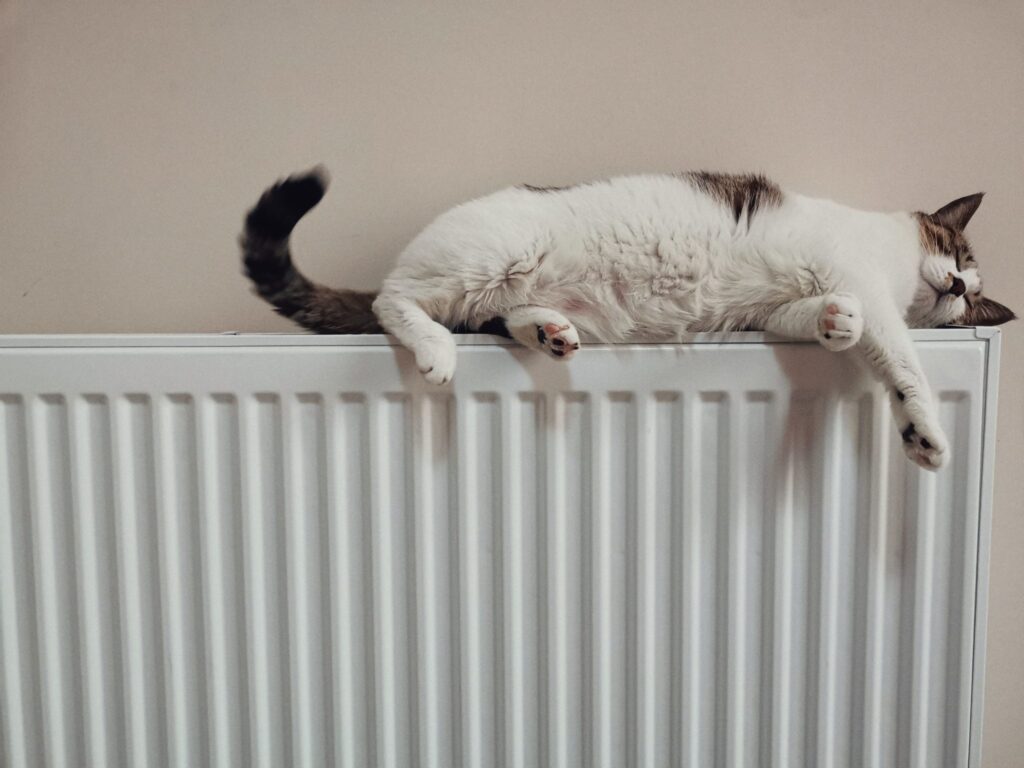
How do you bleed a radiator?
Most of us have experienced cold or lukewarm radiators at some point after switching on our heating systems. Most of the time it’s nothing serious – and it’s an issue you should be able fix yourself without having to think about a boiler service or a new boiler.
Here we’re going to explain how to bleed a radiator, which will increase the efficiency of your heating system, cut energy bills and of course make your home warm and cosy.
What does it mean?
Put simply, bleeding a radiator means letting out the air that gets trapped inside your heating system.
Also called bleeding a boiler, it’s a common issue. The trapped air in the system stops hot water from filling the entire area of a radiator, causing cold spots at the top.
If you hear the sound of gurgling water, or clanking or clicking emanating from your radiators, then it’s a good sign that you need to bleed them.
If you touch the top of your radiator and it feels cooler than the bottom, then there’s air in the system and it’s working inefficiently.
You’re essentially paying for the energy to heat your home but not enjoying the benefits.
How to do it
Bleeding a radiator is a pretty straightforward process, and it’s a good idea to do it before winter kicks in, so that your system is in full working order as temperatures begin to drop.
All you’ll need is a radiator key (available from most hardware outlets) to open the radiator vent valve and a cloth or towel to catch any drips.
Step 1: Turn your heating on
Before you bleed your radiators, you first need to turn your heating on so the radiators fully warm up. This will build up the pressure in your boiler system which will allow you to release the unwanted air.
Step 2: Check which radiators need bleeding
Once your heating is warmed up, go through your whole property and check all your radiators for cold spots.
Also, if the radiator takes a long time to heat up then it is likely it contains trapped air.
Be aware that the radiators are likely to be hot, so take care when touching them.
Step 3: Turn off the heating
Before you bleed your radiators you need to switch off your central heating. If it’s left on, you risk potentially scalding yourself as hot water exits the bleed valve under pressure.
Step 4: Get prepared
If your system is relatively old, the water it contains may be discoloured.
When bleeding radiators it’s best to put down old towels to save yourself a cleaning job – especially if you have light-coloured carpets.
Step 5: Bleed the radiator
Insert the radiator key into the bleed valve, which is usually found at the top corner of the radiator and looks like a round metal hole with a square in the middle.
The radiator key should fit snugly into the bleed valve.
Slowly turn the key anti-clockwise. As air begins to escape from the radiator, you should hear a hissing sound.
A quarter to a half-turn should be enough. Never fully open the valve as once the air has been bled from the radiator, hot water will come rushing out.
Once the valve is open and the air has been expelled, water will start to drip from the radiator.
Be prepared to quickly close the bleed valve, turning the radiator key clockwise to seal the radiator again.
Step 7: Repeat the process
Repeat the same process for all the radiators in your home that you identified as having cold spots.
It’s best to start on the ground floor and work your way up the property, as air rises through the system.
Step 8: Check the pressure
Once you’ve finished bleeding all your radiators, you may need to re-pressurise your system.
When you bleed radiators you will always lose some water. A large enough loss might mean that your system has difficulty heating parts of your property, or it could fail entirely.
If the water pressure is okay, the needle on your boiler’s pressure gauge will be indicating green.
If it’s pointing to yellow, then the system needs to be repressurised.
First, locate the central filling loop that’s connected to your boiler. It should look like a tap and connects to your mains water supply.
Turn the tap and slowly increase the pressure. If you accidentally add too much pressure and the gauge goes into the red, there should also be a bleed tap.
After completing these steps there is no improvement in the heat produced by your radiators, then you may need to contact a professional for a boiler service.
Are you looking for peace of mind when it comes to boiler service and installation in Leeds? Woolfoot Heating offer a range of new boilers from leading manufacturers and are fully qualified and accredited to install them safely. And we offer Yorkshire’s longest new boiler guarantee. Find out more here. Call Woolfoot Heating on 0330 113 8555 or email enquiries@woolfootheating.co.uk.

